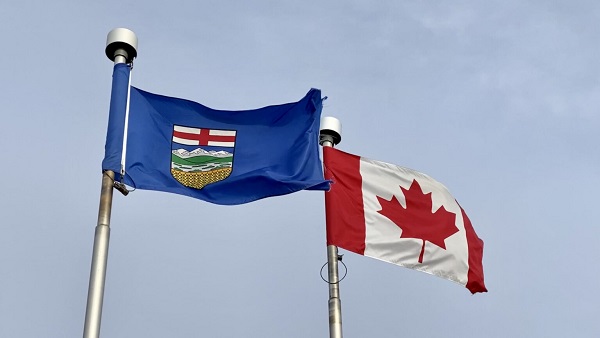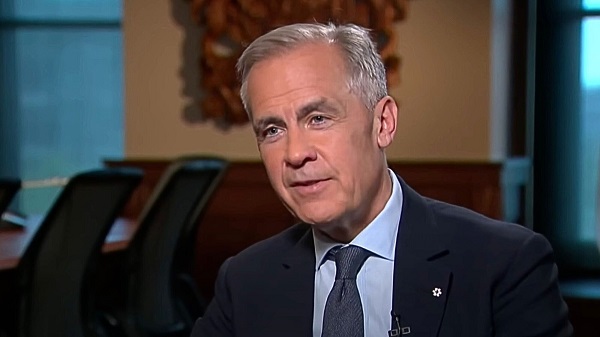Alberta
Alberta’s methane emissions fall 52 per cent

Alberta has cut its methane emissions from the oil and gas sector in half, showing how to reduce emissions and keep powering the world.
As global demand for energy continues to rise, Alberta remains one of the most responsible producers in the world. The province was the first in Canada to set a methane emissions reduction target for the upstream oil and gas sector, and its approach has won international awards and recognition.
This is the message Alberta’s government will take to COP 29. The Alberta approach is working. It is possible to reduce methane emissions and grow the economy, all while delivering the safe, affordable, reliable energy the world will need for generations to come.
According to the latest data from the Alberta Energy Regulator, Alberta has now officially reduced methane emissions from the oil and gas sector by 52 per cent since 2014, even as production has continued rising. The province’s common-sense approach is reducing emissions, creating jobs and growing the economy without punitive federal regulations or caps.
“We do not need Ottawa to tell us how to reduce emissions. In fact, the federal government should learn from Alberta’s success. By working closely with industry and focusing on technology, not costly taxes or unrealistic targets, we can achieve rapid emission reductions while delivering the safe, affordable, reliable energy the world needs.”
Under Alberta’s equivalency agreement with the Government of Canada, the province is in charge of regulating methane emissions. Alberta’s approach is working closely with industry and focusing on achievable results, including early action programs like carbon offsets, implementation of strong provincial regulatory requirements in place for all facilities, and improved leak detection and repair. This is estimated to have saved industry about $600 million compared with the alternative federal regulations that would otherwise have been required.
Since 2020, Alberta has invested $78 million from the industry-funded Technology Innovation and Emissions Reduction program to improve methane monitoring and management. Almost 15,000 well sites and facilities have been reviewed across the province, preventing nearly 17 million tonnes of emissions from being released.
Continuing this momentum, the province recently announced $15 million in funding for the NGIF Emissions Testing Centre to help companies test technologies free of charge in both laboratory and live settings, attract investors and get methane emissions reduction technologies to market faster. Alberta is also engaging with industry to develop a flexible, forward-looking path that will keep reducing emissions while supporting responsible energy production.
“Tourmaline, like other producers in Western Canada, has been diligently reducing methane emission intensity across our field operations, and we are targeting a 55 per cent reduction from 2020 levels by 2027. We operate a world-leading methane emissions testing centre (ETC) at our West Wolf Lake gas plant near Edson, Alberta. At the ETC site, the latest technologies to better measure and mitigate future methane emissions are being developed.”
Minister of Environment and Protected Areas Rebecca Schulz will travel to the 29th Conference of the Parties to the United Nations Framework Convention on Climate Change (COP 29) from Nov. 10 to 16 to share Alberta’s success with the world. Alberta’s environment minister will use the largest global climate summit to promote the province’s effective approach to reducing emissions while keeping energy reliable, secure and affordable.
Alberta’s government is committed to working with national and international partners to advance shared interests that can lead to new opportunities for people and businesses around the world.
Minister Schulz will attend COP29 with one staff member and three department officials. Mission expenses will be posted on the travel and expense disclosure page.
Itinerary for Minister Schulz*
| Nov. 10-11 |
|
| Nov. 12 |
|
| Nov. 13 |
|
| Nov. 14 |
|
| Nov. 15 |
|
| Nov. 16 |
|
*Subject to change.
Quick facts
- The Alberta Energy Regulator monitors, compiles and reports methane emissions data by facility type, production type and area. It releases the ST60B report annually to ensure the public and stakeholders have the latest information about methane emissions from Alberta’s upstream oil and gas sector.
- Alberta carbon offset protocols resulted in more than 58,000 low- or no-bleed devices being installed, and more than 7 million offset credits have been serialized.
- Alberta uses a combination of bottom-up and top-down measurement, monitoring and verification techniques as part of methane measurement compliance data.
Related information
Alberta
Alberta judge sides with LGBT activists, allows ‘gender transitions’ for kids to continue

From LifeSiteNews
‘I think the court was in error,’ Alberta Premier Danielle Smith has said. ‘There will be irreparable harm to children who get sterilized.’
LGBT activists have won an injunction that prevents the Alberta government from restricting “gender transitions” for children.
On June 27, Alberta King’s Court Justice Allison Kuntz granted a temporary injunction against legislation that prohibited minors under the age of 16 from undergoing irreversible sex-change surgeries or taking puberty blockers.
“The evidence shows that singling out health care for gender diverse youth and making it subject to government control will cause irreparable harm to gender diverse youth by reinforcing the discrimination and prejudice that they are already subjected to,” Kuntz claimed in her judgment.
Kuntz further said that the legislation poses serious Charter issues which need to be worked through in court before the legislation could be enforced. Court dates for the arguments have yet to be set.
READ: Support for traditional family values surges in Alberta
Alberta’s new legislation, which was passed in December, amends the Health Act to “prohibit regulated health professionals from performing sex reassignment surgeries on minors.”
The legislation would also ban the “use of puberty blockers and hormone therapies for the treatment of gender dysphoria or gender incongruence” to kids 15 years of age and under “except for those who have already commenced treatment and would allow for minors aged 16 and 17 to choose to commence puberty blockers and hormone therapies for gender reassignment and affirmation purposes with parental, physician and psychologist approval.”
Just days after the legislation was passed, an LGBT activist group called Egale Canada, along with many other LGBT organizations, filed an injunction to block the bill.
In her ruling, Kuntz argued that Alberta’s legislation “will signal that there is something wrong with or suspect about having a gender identity that is different than the sex you were assigned at birth.”
She further claimed that preventing minors from making life-altering decisions could inflict emotional damage.
However, the province of Alberta argued that these damages are speculative and the process of gender-transitioning children is not supported by scientific evidence.
“I think the court was in error,” Alberta Premier Danielle Smith said on her Saturday radio show. “That’s part of the reason why we’re taking it to court. The court had said there will be irreparable harm if the law goes ahead. I feel the reverse. I feel there will be irreparable harm to children who get sterilized at the age of 10 years old – and so we want those kids to have their day in court.”
READ: Canadian doctors claim ‘Charter right’ to mutilate gender-confused children in Alberta
Overwhelming evidence shows that persons who undergo so-called “gender transitioning” procedures are more likely to commit suicide than those who are not given such irreversible surgeries. In addition to catering to a false reality that one’s sex can be changed, trans surgeries and drugs have been linked to permanent physical and psychological damage, including cardiovascular diseases, loss of bone density, cancer, strokes and blood clots, and infertility.
Meanwhile, a recent study on the side effects of “sex change” surgeries discovered that 81 percent of those who have undergone them in the past five years reported experiencing pain simply from normal movements in the weeks and months that followed, among many other negative side effects.
Alberta
Why the West’s separatists could be just as big a threat as Quebec’s

By Mark Milke
It is a mistake to dismiss the movement as too small
In light of the poor showing by separatist candidates in recent Alberta byelections, pundits and politicians will be tempted to again dismiss threats of western separatism as over-hyped, and too tiny to be taken seriously, just as they did before and after the April 28 federal election.
Much of the initial skepticism came after former Leader of the Opposition Preston Manning authored a column arguing that some in central Canada never see western populism coming. He cited separatist sympathies as the newest example.
In response, (non-central Canadian!) Jamie Sarkonak argued that, based upon Alberta’s landlocked reality and poll numbers (37 per cent Alberta support for the “idea” of separation with 25 per cent when asked if a referendum were held “today”), western separation was a “fantasy” that “shouldn’t be taken seriously.” The Globe and Mail’s Andrew Coyne, noting similar polling, opined that “Mr. Manning does not offer much evidence for his thesis that ‘support for Western secession is growing.’”
Prime Minister Mark Carney labelled Manning’s column “dramatic.” Toronto Star columnist David Olive was condescending. Alberta is “giving me a headache,” he wrote. He argued the federal government’s financing of “a $34.2-billion expansion of the Trans Mountain pipeline (TMX)” as a reason Albertans should be grateful. If not, wrote Olive, perhaps it was time for Albertans to “wave goodbye” to Canada.
As a non-separatist, born-and-bred British Columbian, who has also spent a considerable part of his life in Alberta, I can offer this advice: Downplaying western frustrations — and the poll numbers — is a mistake.
One reason is because support for western separation in at least two provinces, Alberta and Saskatchewan, is nearing where separatist sentiment was in Quebec in the 1970s.
In our new study comparing recent poll numbers from four firms (Angus Reid Institute, Innovative Research Group, Leger, and Mainstreet Research), the range of support in recent months for separation from Canada in some fashion is as follows, from low to high: Manitoba (6 per cent to 12 per cent); B.C. (nine per cent to 20 per cent); Saskatchewan (20 per cent to 33 per cent) and Alberta (18 per cent to 36.5 per cent). Quebec support for separation was in a narrow band between 27 per cent and 30 per cent.
What such polling shows is that, at least at the high end, support for separating from Canada is now higher in Saskatchewan and Alberta than in Quebec.
Another, even more revealing comparison is how western separatist sentiment now is nearing actual Quebec votes for separatism or separatist parties back five decades ago. The separatist Parti Québécois won the 1976 Quebec election with just over 41 per cent of the vote. In the 1980 Quebec referendum on separation, “only” 40 per cent voted for sovereignty association with Canada (a form of separation, loosely defined). Those percentages were eclipsed by 1995, when separation/sovereignty association side came much closer to winning with 49.4 per cent of the vote.
Given that current western support for separation clocks in at as much as 33 per cent in Saskatchewan and 36.5 per cent in Alberta, it begs this question: What if the high-end polling numbers for western separatism are a floor and not a ceiling for potential separatist sentiment?
One reason why western support for separation may yet spike is because of the Quebec separatist dynamic itself and its impact on attitudes in other parts of Canada. It is instructive to recall in 1992 that British Columbians opposed a package of constitutional amendments, the Charlottetown Accord, in a referendum, in greater proportion (68.3 per cent) than did Albertans (60.2 per cent) or Quebecers (56.7 per cent).
Much of B.C.’s opposition (much like in other provinces) was driven by proposals for special status for Quebec. It’s exactly why I voted against that accord.
Today, with Prime Minister Carney promising a virtual veto to any province over pipelines — and with Quebec politicians already saying “non” — separatist support on the Prairies may become further inflamed. And I can almost guarantee that any whiff of new favours for Quebec will likely drive anti-Ottawa and perhaps pro-separatist sentiment in British Columbia.
There is one other difference between historic Quebec separatist sentiment and what exists now in a province like Alberta: Alberta is wealthy and a “have” province while Quebec is relatively poor and a have-not. Some Albertans will be tempted to vote for separation because they feel the province could leave and be even more prosperous; Quebec separatist voters have to ask who would pay their bills.
This dynamic again became obvious, pre-election, when I talked with one Alberta CEO who said that five years ago, separatist talk was all fringe. In contrast, he recounted how at a recent dinner with 20 CEOs, 18 were now willing to vote for separation. They were more than frustrated with how the federal government had been chasing away energy investment and killing projects since 2015, and had long memories that dated back to the National Energy Program.
(For the record, they view the federal purchase of TMX as a defensive move in response to its original owner, Kinder Morgan, who was about to kill the project because of federal and B.C. opposition. They also remember all the other pipelines opposed/killed by the Justin Trudeau government.)
Should Canadians outside the West dismiss western separatist sentiment? You could do that. But it’s akin to the famous Clint Eastwood question: Do you feel lucky?
Mark Milke is president and founder of the Aristotle Foundation for Public Policy and co-author, along with Ven Venkatachalam, of Separatist Sentiment: Polling comparisons in the West and Quebec.
-

 COVID-1912 hours ago
COVID-1912 hours agoOntario man launches new challenge against province’s latest attempt to ban free expression on roadside billboards
-

 Energy20 hours ago
Energy20 hours agoThis Canada Day, Celebrate Energy Renewal
-

 Business2 days ago
Business2 days agoWhile China Hacks Canada, B.C. Sends Them a Billion-Dollar Ship Building Contract
-

 Alberta1 day ago
Alberta1 day agoSo Alberta, what’s next?
-

 Alberta11 hours ago
Alberta11 hours agoAlberta Next Takes A Look At Alberta Provincial Police Force
-

 Bjorn Lomborg2 days ago
Bjorn Lomborg2 days agoThe Physics Behind The Spanish Blackout
-

 Alberta13 hours ago
Alberta13 hours agoCanadian Oil Sands Production Expected to Reach All-time Highs this Year Despite Lower Oil Prices
-

 Business15 hours ago
Business15 hours agoPotential For Abuse Embedded In Bill C-5






